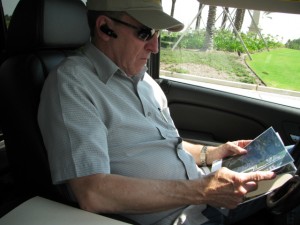Urban Renewal: Why Toxic ‘Brownfields’ Are Tough to Redevelop

Courtesy Cherokee Fund
2007 implosion of power plant to clear site for new homes
For developers of housing or commercial projects in Texas, bringing what had been contaminated, blighted lots back to life can be full of challenges, both legal and economic. But sometimes it works.
“Once you own the site, you have repercussions to that and potential liabilities,” says John Slavich, a Dallas lawyer.
TCEQ Easier, EPA Harder
Slavich has shepherded hundreds of Texas brownfield projects through an often daunting legal and regulatory maze. Most sites he worked on were ones overseen by the Texas Commission on Environmental Quality (TCEQ). He says he tries to avoid other, sometimes more toxic sites under control of the US Environmental Protection Agency (EPA).
“They are much more difficult and in fact, I rarely work on those (federal) sites just because you go through a long, arduous bureaucratic process,” said Slavich in an interview with StateImpact.
Brownfield is a broad term often used to refer to old industrial lots with low levels of contamination but it can also include more seriously tainted sites like those on the EPA’s Superfund list.
Texas is among states with a Voluntary Cleanup Program. The EPA has its Brownfields Program.
The EPA generally has stricter requirements for cleanups. For example, the EPA requires that groundwater contamination that’s allowed to remain must be nonetheless monitored, potentially decades. Whereas TCEQ guidelines allow the monitoring to stop if, after two years, the contamination has not spread.
New Approach in Houston
One example of the challenge can be found in Houston at what was the MDI Superfund site a couple miles east of downtown. The site had held thousands of barrels of toxic waste that had leached into the soil and groundwater.

Dave Fehling/StateImpact Texas
Former MDI Superfund site in Houston
In 2006, the site became the first of its kind in the nation in which a company that had no responsibility for contaminating the site agreed to pay for cleaning it up. The EPA struck a deal with a Houston developer to buy the property and finish the cleanup. The intent was that someday the site would be a residential development with hundreds of homes.
Christopher Amandes is a Houston attorney who worked for the developer, a company now called Fenway Development. In an email to StateImpact, Amandes explains why the project was considered novel:
“This was a very different model than at other Superfund sites where EPA is either using the Superfund enforcement process to force the responsible parties to perform the cleanup or is doing the cleanup itself and then suing the responsible parties to recover EPA’s cleanup costs… And because the groundwater monitoring was likely to go on for decades while the property was subdivided and redeveloped, we had to develop a mechanism for how people could obtain financing and buy houses at the site without them or their lenders becoming liable parties under the Superfund law. That said, I found EPA to be very thoughtful and considerate throughout this process. A lot of the elements of the deal had to get sign-off from EPA headquarters and the Department of Justice, which slowed things down, but the government also appreciated that this site presented an opportunity to introduce a new paradigm into the Superfund program at sites that were “right side up,” that is, where the value of the property exceeded the cost of the cleanup.”
Success by the Bay
A much less contaminated site that fell under Texas—not federal—jurisdiction can be found in the city of Webster near Galveston Bay. While not as far along as its developer had hoped, the site now has 50 homes and there are plans for 400 more plus apartments and a marina.

Dave Fehling/StateImpact Texas
New home development in Webster, Texas on brownfield site
Six years ago, the site was a contaminated eyesore with a hulking, 10-story, defunct power plant sitting on it. There were pockets of mercury and lead contamination. Johnson Development, a Houston company, took over the site, removing tons of soil, even an entire pond. Demolition crews imploded the power plant.

Dave Fehling/StateImpact Texas
Johnson Development's Bob Douglas
Now, says Johnson Development General Manager Bob Douglas, “Nothing here from a heavy metal standpoint or anything of a toxic nature that would hurt you is on this site. It was all done very properly.”
Limiting Liability
When brownfield sites are cleaned-up and meet standards set and verified by the TCEQ, they can qualify for what’s called a Certificate of Completion. It releases the owner of liability for any contamination issues that might arise in the future, a key factor in making the sites attractive to investors and banks.
Another key component in Texas law that can make a brownfield more economically appealing to a developer is what’s called a Municipal Setting Designation. It allows certain levels of contamination of shallow groundwater to remain un-remediated on a brownfield site if city leaders pass an ordinance stipulating that no one can ever use the groundwater.
Many Will Never Get a New Life
Nationwide, there’s an estimated 450,000 brownfields. But unlike what happened in Webster, many may never be re-purposed.
“There are clearly sites that probably won’t be cleaned up in our lifetimes,” says Robert Colangelo, executive director of the National Brownfield Association. Colangelo estimates that only 20% of all the sites are economically viable for redevelopment.
Colangelo says some states including Michigan, Pennsylvania, Massachusetts and Illinois have been the most aggressive in offering tax breaks and other incentives to encourage developers to take on brownfield projects.

Dave Fehling/StateImpact Texas
Homes near the former MDI Superfund site in Houston
“Texas being Texas, I don’t think there’s going to be a lot of state aid to help these projects along,” says Slavich, the Dallas attorney.
But what Texas does provide is a robust economy in comparison with other states, with the core areas of Dallas and Houston seeing new development of old lots, which experts say could increase interest in brownfields as potential sites for new housing or commercial buildings.

